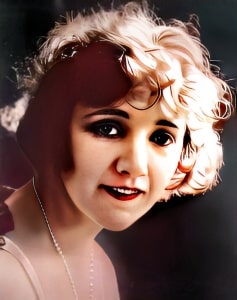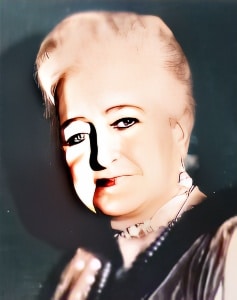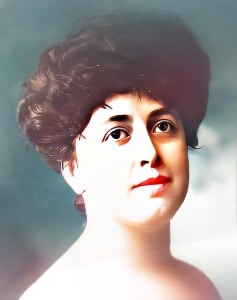 Constance Talmadge, a luminous figure in the silent film era, captivated audiences with her undeniable talent and magnetic charm.
Constance Talmadge, a luminous figure in the silent film era, captivated audiences with her undeniable talent and magnetic charm.
Born on April 19, 1898, in Brooklyn, New York, she was the youngest of three sisters who all made their mark in the entertainment industry. Constance, alongside her sisters Norma and Natalie, achieved lasting recognition for her remarkable performances in a career that spanned the early 20th century.
Talmadge’s journey into the world of entertainment began during her formative years when she participated in various stage productions. Her initial foray into the world of film occurred with short films produced by Vitagraph Studios. Her screen presence and talent quickly garnered the attention of producers, leading to her first feature film role in “The Battle of the Sexes” (1914).
In 1916, a pivotal moment in her career arrived when Constance Talmadge signed with the Select Pictures Corporation. During her association with Select, she collaborated closely with director Chester Withey, forging a successful partnership that produced a string of popular and critically acclaimed films.
One of Talmadge’s defining characteristics as an actress was her versatility. She effortlessly transitioned between comedic and dramatic roles, revealing her extraordinary range. Her performances were characterized by a natural and endearing charm, earning her the affectionate moniker “America’s Sweetheart.”
Notable entries in Constance Talmadge’s filmography include “The Studio Girl” (1918), where she showcased her comedic talents as a small-town girl striving for success in Hollywood, drawing from her own experiences as a budding actress navigating the industry.
In “The Virtuous Vamp” (1919), she was able to break away from traditional damsel in distress roles and embrace a more complex character, further cementing her reputation as a versatile and accomplished actress.
Another significant highlight in her career was “ The Primitive Lover” (1922), where Talmadge’s radiant screen presence and comedic timing shone brightly. The film revolved around a young woman’s humorous attempts to reform her husband, revealing her flair for delivering lighthearted yet heartfelt performances.
Constance Talmadge’s portfolio also includes “Her Sister from Paris” (1925), where she skillfully portrayed twin sisters with contrasting personalities. Her compelling performance in this film demonstrated her capacity to inhabit dual roles with authenticity and charm.
Talmadge’s impact extended beyond her acting career. She actively participated in the creative process behind her films, often contributing to the writing and production aspects. Her influence in the industry was palpable, and she played an instrumental role in the business side of filmmaking.
While the advent of sound in cinema posed challenges for many silent film stars, Constance Talmadge’s transition to talkies was not as successful as her silent film career. Following her final film, “Her Night of Romance” (1924), she withdrew from acting, concluding a remarkable chapter in the history of silent cinema.
Constance Talmadge’s contributions to the world of film, her timeless charm, and her significant influence continue to be celebrated and cherished by audiences. Her fashion sense and embrace of the bobbed haircut made her a style icon of the 1920s. Despite her untimely passing on November 23, 1973, at the age of 75, Constance Talmadge’s legacy endures through her captivating performances, leaving an indelible mark on the golden age of Hollywood.
Loading live eBay listings...




